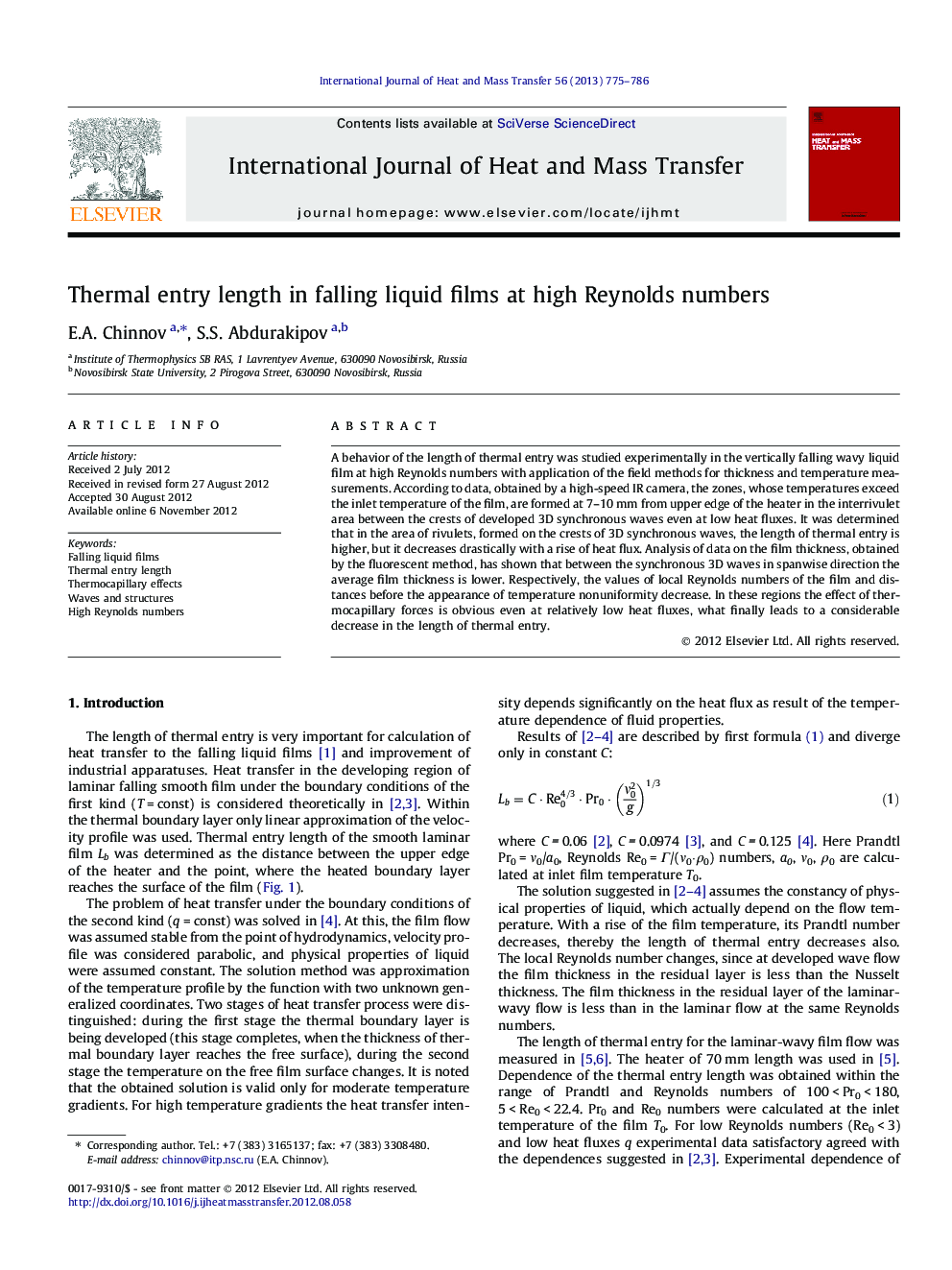| Article ID | Journal | Published Year | Pages | File Type |
|---|---|---|---|---|
| 658829 | International Journal of Heat and Mass Transfer | 2013 | 12 Pages |
Abstract
A behavior of the length of thermal entry was studied experimentally in the vertically falling wavy liquid film at high Reynolds numbers with application of the field methods for thickness and temperature measurements. According to data, obtained by a high-speed IR camera, the zones, whose temperatures exceed the inlet temperature of the film, are formed at 7-10Â mm from upper edge of the heater in the interrivulet area between the crests of developed 3D synchronous waves even at low heat fluxes. It was determined that in the area of rivulets, formed on the crests of 3D synchronous waves, the length of thermal entry is higher, but it decreases drastically with a rise of heat flux. Analysis of data on the film thickness, obtained by the fluorescent method, has shown that between the synchronous 3D waves in spanwise direction the average film thickness is lower. Respectively, the values of local Reynolds numbers of the film and distances before the appearance of temperature nonuniformity decrease. In these regions the effect of thermocapillary forces is obvious even at relatively low heat fluxes, what finally leads to a considerable decrease in the length of thermal entry.
Related Topics
Physical Sciences and Engineering
Chemical Engineering
Fluid Flow and Transfer Processes
Authors
E.A. Chinnov, S.S. Abdurakipov,
